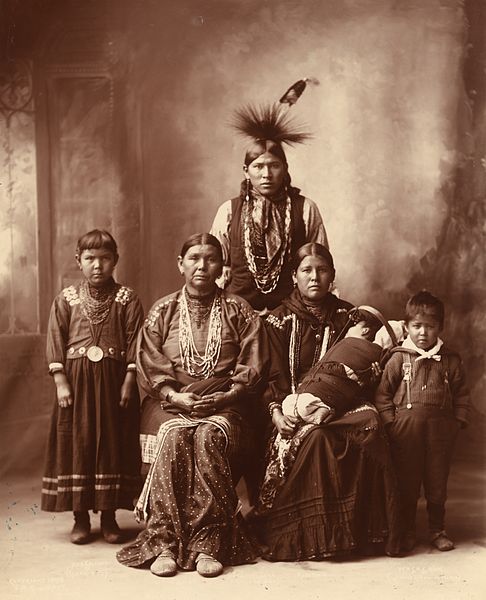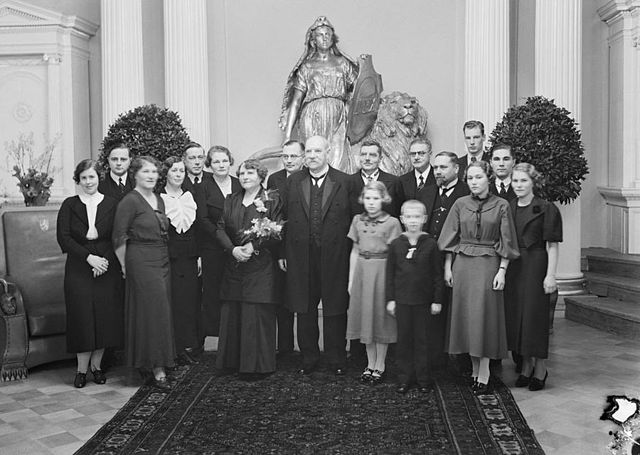Family is a group of people related either by consanguinity or affinity. It forms the basis for social order. The purpose of the family is to maintain the well-being of its members and of society. Ideally, families offer predictability, structure, and safety as members mature and learn to participate in the community. Historically, most human societies use family as the primary purpose of attachment, nurturance, and socialization.
Sauk family photographed by Frank Rinehart in 1899
Detail of a gold glass medallion with a portrait of a family, from Alexandria (Roman Egypt), 3rd–4th century (Brescia, Museo di Santa Giulia)
Mennonite siblings, Montana, United States, 1937
A German mother with her children in the 1960s
A nuclear family is a family group consisting of parents and their children, typically living in one home residence. It is in contrast to a single-parent family, a larger extended family, or a family with more than two parents. Nuclear families typically center on a married couple which may have any number of children. There are differences in definition among observers. Some definitions allow only biological children who are full-blood siblings and consider adopted or half- and step-siblings a part of the immediate family, but others allow for a step-parent and any mix of dependent children, including stepchildren and adopted children. Some sociologists and anthropologists consider the extended family structure to be the most common family structure in most cultures and at most times, rather than the nuclear family.
An American nuclear family composed of the mother, father, and their children, c. 1955
P. E. Svinhufvud, the President of Finland (in the middle), with his family on his 75th birthday in 1936
A Detroit factory worker and his family (1954)







